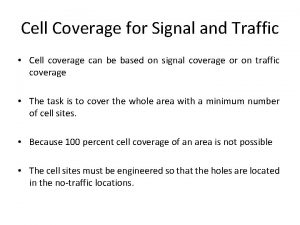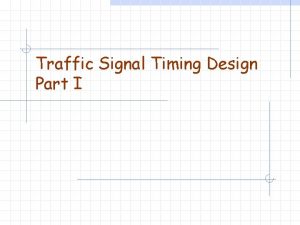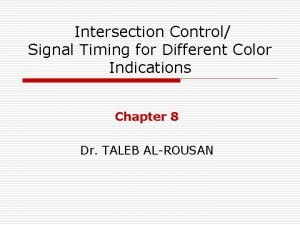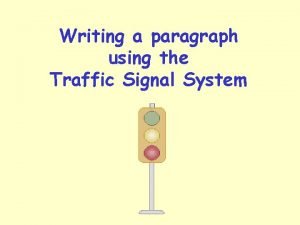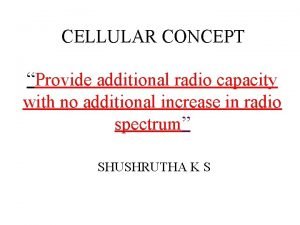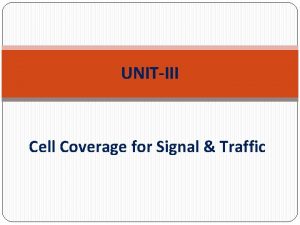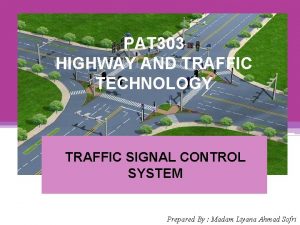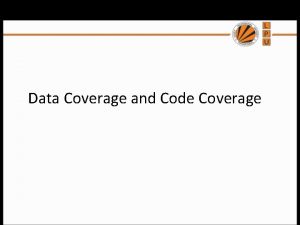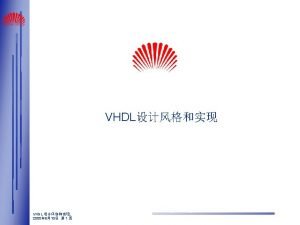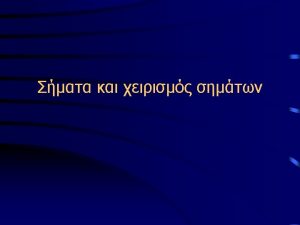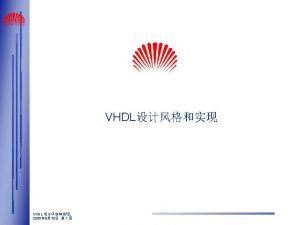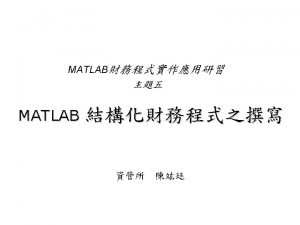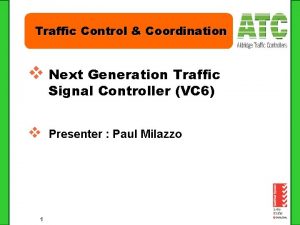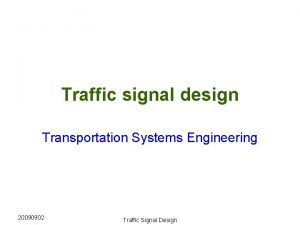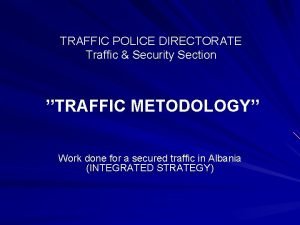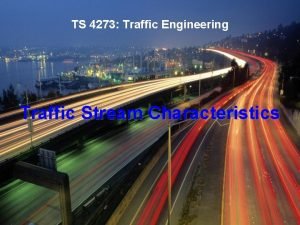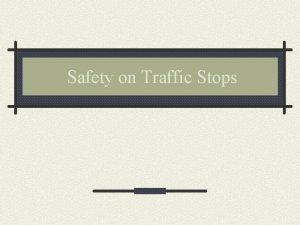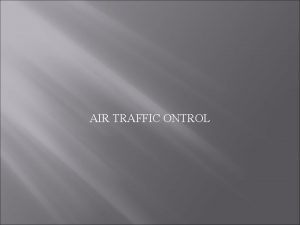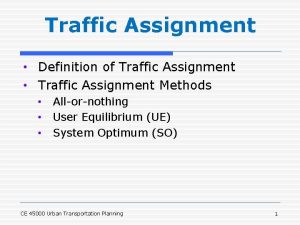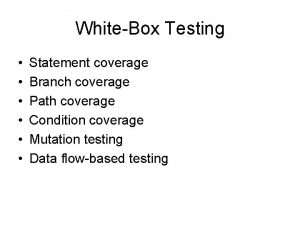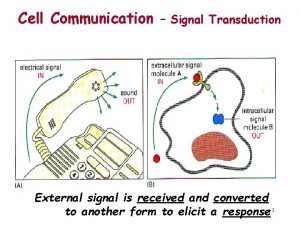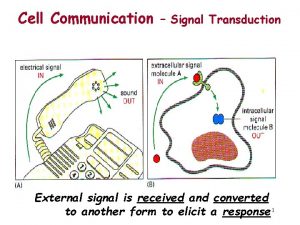Cell Coverage for Signal and Traffic Cell coverage























































- Slides: 55

Cell Coverage for Signal and Traffic • Cell coverage can be based on signal coverage or on traffic coverage • The task is to cover the whole area with a minimum number of cell sites. • Because 100 percent cell coverage of an area is not possible • The cell sites must be engineered so that the holes are located in the no-traffic locations.

Ground Incident Angle and Ground Elevation Angle

Example 1 In a mobile radio environment, the average cellsite antenna height is about 50 m, the mobile antenna height is about 3 m, and the communication path length is 5 km.

Ground Reflection Angle and Reflection Point

Example 2

OBTAINING THE MOBILE POINT-TO-POINT MODEL (LEE MODEL) • Generate a standard condition • Obtain an area-to-area prediction model • Obtain a mobile point-to-point model using the area-to-area model as a base

Generating the Standard Condition

Effect of the Human-Made Structures Propagation path loss curves for human-made structures. (a) For selecting measurement areas (b) path loss phenomenon.

Effect of the Human-Made Structures (c) Propagation path loss in different cities.

The Phase Difference between a Direct Path and a Ground-Reflected Path (d) Explanation of the path-loss phenomenon.

A Simple Model

Constant Standard Deviation along a Path-Loss Curve An 8 -d. B local mean spread.

Gaussian

Straight Line path loss slope with confidence • The received power is

Confidence level

The different Confidence Levels

Example • From the path-loss curve, we read the expected signal level as − 100 d. Bm at 16 km (10 mi). If the standard deviation σ = 8 d. B, what level would the signal equal or exceed for a 20 percent confidence level?

Determination of Confidence Interval • If we know the standard deviation, then we can estimate how often the local mean (average power of the signal) falls within given limits (confidence interval). • The confidence intervals are defined as

Determination of Confidence Interval The standard deviation can be found from the table

A General Formula for Mobile Radio Propagation

A General Formula for Mobile Radio Propagation • Sub-urban area • The 1 -mi intercept level in a sub-urban area is − 61. 7 d. Bm under the standard conditions • From theoretical prediction model the received power Pr at the suburban area is

A General Formula for Mobile Radio Propagation • The above equation is simplified as • To change the above equation to a general formula by using Pr at 10 mi as a reference which is − 100 d. Bm • Also the 40 d. B/oct slope used is generous

A General Formula for Mobile Radio Propagation • The most general formula is expressed as follows

PROPAGATION OVER WATER OR FLAT OPEN AREA A model for propagation over water.

Between Fixed Stations

A characteristic of Foliage Environment

Foliage Loss

PROPAGATION IN NEAR-IN DISTANCE Elevation angle of the shadow of the antenna pattern.

Curves for Near-in Propagation

Calculation of Near-Field Propagation • The range d. Fof near field

LONG-DISTANCE PROPAGATION Noise-limited system Interference-limited system Tropospheric refraction Tropospheric reflection. Moistness Trapping, or duct propagation Elevated ducts are due to large air masses (elevations of 1000 to 5000 ft , thickness from a few feet to a thousand feet. ) • Surface ducts appear over the sea and are about 1. 5 m (5 ft) thick. And are produced by the cooling air of the earth. • •

LEE MODEL IN NON-OBSTRUCTIVE CONDITION

OBTAIN PATH LOSS FROM A POINT-TO-POINT PREDICTION MODEL: A GENERAL APPROACH • Finding the Antenna-Height Gain

Finding the Antenna-Height Gain

Antenna Height Gain

Another Physical Explanation of Effective Antenna Height

Another Physical Explanation of Effective Antenna Height

Another Physical Explanation of Effective Antenna Height

Man-made environment (a) Sparse man-made structures. (b) Dense man-made structures.

Illustration of the terrain effect on the effective antenna gain at each position. (a) Hilly terrain contour.

Illustration of the terrain effect on the effective antenna gain at each position (b) Point-to-point prediction

In Obstructive Condition

Obstructive condition

Obstructive condition

Diffraction loss due to obstructive conditions (a) Single knife-edge

Diffraction loss due to obstructive conditions (b) double knife-edges

Diffraction loss due to obstructive conditions (c) nonclear path.

Measurement of Diffraction Loss or Shadow Loss

Shadow loss Prediction

Shadow Loss Prediction

General Formula of Lee Model • 1. Direct-wave case. – The effective antenna height is a major factor which varies with the location of the mobile unit while it travels. • 2. Shadow case. – No effective antenna height exists. The loss is totally due to the knife-edge diffraction loss. • 3. Over-the-water condition. – The free space path-loss is applied.

General Formula of Lee Model

Merits of Lee Model • The point-to-point model is very useful for designing a mobile cellular system with a radius for each cell of 10 mi or less. • This point-to-point prediction can be used to provide overall coverage of all cell sites and to avoid cochannel interference. • The occurrence of handoff in the cellular system can be predicted more accurately. • The point-to-point prediction model is a basic tool that is used to generate – – a signal coverage map an interference area map a handoff occurrence map or an optimum system design configuration

CELL-SITE ANTENNA HEIGHTS AND SIGNAL COVERAGE CELLS

Visualization of effective antenna height & Coverage Cells Different coverage concept. (a) Signal coverage due to effective antenna heights. Signal coverage served by two cell sites.
 Cell coverage for signal and traffic
Cell coverage for signal and traffic Incomina
Incomina Intelligent traffic solutions
Intelligent traffic solutions Baseband signal and bandpass signal
Baseband signal and bandpass signal Baseband signal and bandpass signal
Baseband signal and bandpass signal Even odd signals
Even odd signals Traffic signal timing diagram
Traffic signal timing diagram International roadway signs only use
International roadway signs only use Minimum cycle length
Minimum cycle length Traffic signal sentence
Traffic signal sentence Traffic signal light
Traffic signal light Digital signal as a composite analog signal
Digital signal as a composite analog signal Hexagon shape is used for radio coverage for a cell because
Hexagon shape is used for radio coverage for a cell because Kontinuitetshantering i praktiken
Kontinuitetshantering i praktiken Typiska novell drag
Typiska novell drag Nationell inriktning för artificiell intelligens
Nationell inriktning för artificiell intelligens Ekologiskt fotavtryck
Ekologiskt fotavtryck Shingelfrisyren
Shingelfrisyren En lathund för arbete med kontinuitetshantering
En lathund för arbete med kontinuitetshantering Kassaregister ideell förening
Kassaregister ideell förening Tidbok
Tidbok Sura för anatom
Sura för anatom Förklara densitet för barn
Förklara densitet för barn Datorkunskap för nybörjare
Datorkunskap för nybörjare Stig kerman
Stig kerman Hur skriver man en debattartikel
Hur skriver man en debattartikel Delegerande ledarstil
Delegerande ledarstil Nyckelkompetenser för livslångt lärande
Nyckelkompetenser för livslångt lärande Påbyggnader för flakfordon
Påbyggnader för flakfordon Lufttryck formel
Lufttryck formel Svenskt ramverk för digital samverkan
Svenskt ramverk för digital samverkan Kyssande vind analys
Kyssande vind analys Presentera för publik crossboss
Presentera för publik crossboss Teckenspråk minoritetsspråk argument
Teckenspråk minoritetsspråk argument Vem räknas som jude
Vem räknas som jude Klassificeringsstruktur för kommunala verksamheter
Klassificeringsstruktur för kommunala verksamheter Luftstrupen för medicinare
Luftstrupen för medicinare Claes martinsson
Claes martinsson Cks
Cks Byggprocessen steg för steg
Byggprocessen steg för steg Mat för idrottare
Mat för idrottare Verktyg för automatisering av utbetalningar
Verktyg för automatisering av utbetalningar Rutin för avvikelsehantering
Rutin för avvikelsehantering Smärtskolan kunskap för livet
Smärtskolan kunskap för livet Ministerstyre för och nackdelar
Ministerstyre för och nackdelar Tack för att ni har lyssnat
Tack för att ni har lyssnat Referatmarkering
Referatmarkering Redogör för vad psykologi är
Redogör för vad psykologi är Borstål, egenskaper
Borstål, egenskaper Atmosfr
Atmosfr Borra hål för knoppar
Borra hål för knoppar Orubbliga rättigheter
Orubbliga rättigheter Formula varians
Formula varians Tack för att ni har lyssnat
Tack för att ni har lyssnat Steg för steg rita
Steg för steg rita Informationskartläggning
Informationskartläggning
